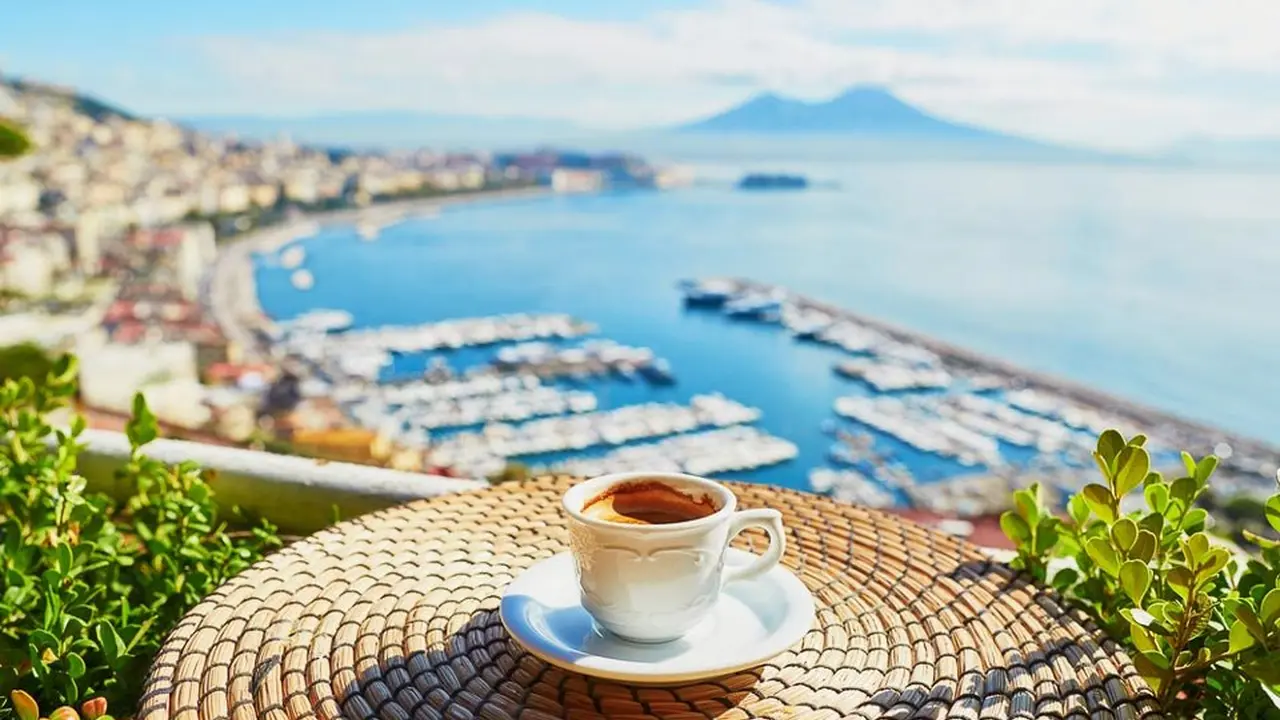Pompeii and Herculaneum: Ancient Roman Cities Preserved
Discover the beautiful gardens of Italy. Learn about different styles, designs, and historical significance. Experience the tranquility and beauty of Italian gardens.

Introduction to Italy's Garden Culture and History
Hey garden lovers! If you're planning a trip to Italy, you absolutely have to carve out some time to explore its stunning gardens. Italian gardens aren't just green spaces; they're living works of art, reflecting centuries of history, culture, and design. From the formal Renaissance gardens to the more relaxed Baroque styles, each garden tells a story. We're talking about places where you can wander through perfectly manicured hedges, admire ancient sculptures, and soak up the sheer beauty of nature intertwined with human creativity.
Types of Italian Gardens Exploring Renaissance and Baroque Styles
Italian gardens come in various styles, each with its unique charm. Two of the most prominent are the Renaissance and Baroque gardens. Let's dive in:
Renaissance Gardens Formal Design and Symmetry
Renaissance gardens are all about order, symmetry, and harmony. Think geometric shapes, carefully planned layouts, and a strong emphasis on perspective. These gardens often feature terraces, fountains, and sculptures strategically placed to create a sense of balance and proportion. The goal was to showcase human control over nature.
Baroque Gardens Grandeur and Theatricality
Baroque gardens, on the other hand, are more dramatic and theatrical. They're characterized by elaborate fountains, intricate parterres (ornamental gardens with patterned flowerbeds), and a sense of movement and dynamism. Baroque gardens aim to overwhelm the senses and create a sense of awe and wonder.
Famous Italian Gardens Must-Visit Destinations for Garden Enthusiasts
Alright, let's get to the good stuff – the gardens you absolutely have to visit!
Villa d'Este Tivoli A Masterpiece of Water Features
Villa d'Este in Tivoli is a UNESCO World Heritage site and a true masterpiece of Renaissance garden design. The garden is famous for its incredible water features, including hundreds of fountains, pools, and cascades. The most iconic is the Hundred Fountains, a long, terraced fountain adorned with sculptures and water jets. Walking through Villa d'Este is like stepping into a water wonderland.
Boboli Gardens Florence A Royal Retreat
Located behind the Pitti Palace in Florence, the Boboli Gardens are one of the earliest and most important examples of the Italian garden. These gardens are vast and sprawling, featuring hidden fountains, sculptures, and grottoes. Don't miss the Grotta Grande, an artificial cave decorated with stalactites and sculptures. The Boboli Gardens offer stunning views of Florence and a peaceful escape from the city's hustle and bustle.
Villa Lante Bagnaia Perfect Harmony and Geometric Design
Villa Lante in Bagnaia is a hidden gem that's often overlooked by tourists. This Renaissance garden is known for its perfect harmony and geometric design. The garden is divided into terraces, each with its own unique features, including fountains, sculptures, and parterres. Villa Lante is a place where you can truly appreciate the beauty of order and balance.
Isola Bella Lake Maggiore A Baroque Paradise
Isola Bella is one of the Borromean Islands on Lake Maggiore, and it's home to a stunning Baroque garden. The garden is arranged on multiple terraces, each adorned with statues, fountains, and exotic plants. The highlight of the garden is the Teatro Massimo, a large outdoor amphitheater decorated with sculptures and obelisks. Isola Bella is a true paradise for garden lovers.
Planning Your Visit Practical Tips and Information
So, you're ready to visit some Italian gardens? Here are a few tips to help you plan your trip:
- Best Time to Visit: Spring (April-May) and fall (September-October) are the best times to visit Italian gardens. The weather is mild, and the crowds are smaller.
- Tickets and Reservations: Many popular gardens require advance ticket purchases, especially during peak season. Check the garden's website for information on tickets and reservations.
- What to Wear: Wear comfortable shoes, as you'll be doing a lot of walking. Dress in layers, as the weather can change quickly.
- Guided Tours: Consider taking a guided tour to learn more about the history, design, and plants of the garden.
- Photography: Most gardens allow photography, but some may restrict the use of tripods or flash. Check the garden's rules before you start snapping photos.
Essential Garden Tools and Accessories for the Avid Gardener
Inspired by the beauty of Italian gardens? Bring a piece of that magic back home with the right tools! Here are some recommendations for creating your own Italian-inspired garden, along with product suggestions and comparisons:
Pruning Shears Precision Cutting for Beautiful Hedges
Why You Need Them: Italian gardens are all about manicured hedges and perfectly shaped plants. High-quality pruning shears are essential for maintaining that look.
Product Recommendations:
- Felco 2 Classic Manual Pruning Shears: These are the gold standard in pruning shears. Known for their durability and precision, they're perfect for any serious gardener. Price: Around $60. Pros: Extremely durable, replaceable parts, comfortable grip. Cons: Can be a bit pricey. Use Case: Shaping boxwood hedges, pruning roses, general garden maintenance.
- ARS HP-VS8Z Signature Heavy Duty Pruning Shears: Another excellent option, these shears are known for their sharpness and smooth cutting action. Price: Around $70. Pros: Very sharp, comfortable for extended use, good for larger branches. Cons: May require more frequent sharpening. Use Case: Pruning fruit trees, shaping shrubs, cutting thicker stems.
- Fiskars PowerGear2 Pruner: A more budget-friendly option, these shears offer good performance at a reasonable price. Price: Around $25. Pros: Affordable, easy to use, good for beginners. Cons: Not as durable as higher-end models. Use Case: Light pruning, trimming flowers, general garden tasks.
Watering Can Gentle Hydration for Delicate Plants
Why You Need It: Proper watering is crucial for healthy plants. A good watering can allows you to deliver water precisely where it's needed, without damaging delicate foliage.
Product Recommendations:
- Haws Metal Watering Can: A classic and stylish choice, Haws watering cans are known for their durability and elegant design. Price: Around $100. Pros: Durable, beautiful design, excellent balance. Cons: Expensive, may be too heavy for some users when full. Use Case: Watering potted plants, delicate seedlings, and herbs.
- Union Watering Can: A more affordable metal option, Union watering cans offer good quality and a traditional look. Price: Around $40. Pros: Affordable, durable, classic design. Cons: Not as refined as Haws, may rust if not properly cared for. Use Case: General garden watering, watering larger plants.
- Plastic Watering Can: A lightweight and inexpensive option, plastic watering cans are perfect for beginners or those who prefer a lighter tool. Price: Around $15. Pros: Lightweight, affordable, easy to clean. Cons: Not as durable as metal, can crack or fade in sunlight. Use Case: Watering small plants, seedlings, and indoor plants.
Gardening Gloves Protection and Comfort for Your Hands
Why You Need Them: Protect your hands from thorns, dirt, and other hazards with a good pair of gardening gloves.
Product Recommendations:
- Foxgloves Original Gardening Gloves: These gloves are made from a soft, stretchy material that provides excellent dexterity and comfort. Price: Around $25. Pros: Comfortable, breathable, good for delicate tasks. Cons: Not as durable as leather gloves. Use Case: Planting seedlings, weeding, deadheading flowers.
- Leather Gardening Gloves: Leather gloves offer excellent protection and durability. Look for gloves with a reinforced palm and adjustable wrist closure. Price: Around $30. Pros: Durable, protective, good for heavy-duty tasks. Cons: Can be stiff and uncomfortable at first, may require breaking in. Use Case: Pruning thorny bushes, digging, moving rocks.
- Nitrile Coated Gardening Gloves: These gloves provide good grip and protection from moisture and chemicals. They're a good all-around option for various gardening tasks. Price: Around $10. Pros: Affordable, good grip, water-resistant. Cons: Not as breathable as other options, may cause sweaty hands. Use Case: Planting, weeding, handling fertilizers.
Trowel Planting and Transplanting with Ease
Why You Need It: A trowel is essential for planting seedlings, transplanting flowers, and digging small holes.
Product Recommendations:
- DeWit Hand Trowel: DeWit tools are known for their quality and durability. This trowel is made from forged steel and features a comfortable wooden handle. Price: Around $40. Pros: Extremely durable, comfortable handle, good for heavy use. Cons: Expensive. Use Case: Planting, transplanting, digging in hard soil.
- Radius Garden Ergonomic Aluminum Hand Trowel: This trowel features an ergonomic handle that reduces strain on your wrist and hand. Price: Around $25. Pros: Comfortable, lightweight, good for users with arthritis or other hand problems. Cons: Not as durable as steel trowels. Use Case: Planting, transplanting, weeding in soft soil.
- Fiskars Ergo Trowel: A budget-friendly option with a comfortable grip and durable blade. Price: Around $15. Pros: Affordable, comfortable, good for general use. Cons: Not as durable as higher-end models. Use Case: Planting, transplanting, light digging.
Bringing the Italian Garden Home Design Ideas and Plant Choices
Okay, you've got the tools. Now, how do you actually *create* an Italian-inspired garden? Here are some ideas:
* **Embrace Symmetry:** Think about geometric shapes, straight lines, and balanced layouts. * **Add Water Features:** Fountains, ponds, or even a simple birdbath can add a touch of Italian elegance. * **Incorporate Statues and Sculptures:** Statues of Roman gods and goddesses, or even simple terracotta pots, can add a classical touch. * **Choose the Right Plants:** Think about plants that are commonly found in Italian gardens, such as cypress trees, olive trees, rosemary, lavender, and citrus trees. * **Create Terraces:** If you have a sloped yard, consider creating terraces to add visual interest and create different levels in your garden.So there you have it - a deep dive into the world of Italian gardens! Hopefully, this guide inspires you to plan your own Italian garden adventure and maybe even create a little piece of Italy in your own backyard. Ciao!
:max_bytes(150000):strip_icc()/277019-baked-pork-chops-with-cream-of-mushroom-soup-DDMFS-beauty-4x3-BG-7505-5762b731cf30447d9cbbbbbf387beafa.jpg)






